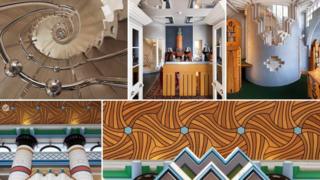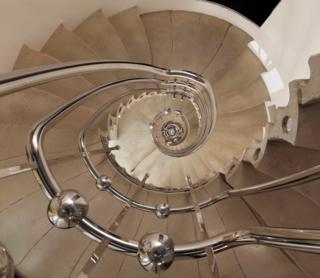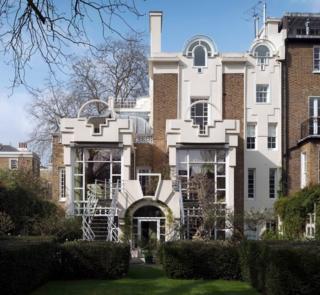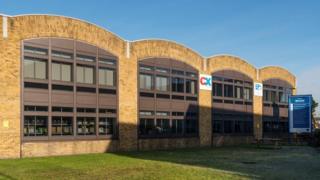National Heritage List: Post-modern buildings get listed status
 Image copyright
Historic England
Image copyright
Historic England
Buildings across England considered post-modern in design have been given listed status.
The 17 structures, which include houses, schools, courts and commercial premises, have been added to the National Heritage List for England.
They range from a crown court in Cornwall and a warehouse in Slough to housing schemes in London's Docklands.
Post-modern architecture emerged in the 1970s in reaction to modernism but fell out of favour before a revival in 2011.

Thematic House, Kensington and Chelsea, London
 Image copyright
Davies James/Historic England
Image copyright
Davies James/Historic England
Renowned historian and architecture critic, Charles Jencks, was the designer of Thematic House, which has been Grade I listed.
 Image copyright
Chris Redgrave/Historic England
Image copyright
Chris Redgrave/Historic England

London's Docklands - four buildings get Grade II status
China Wharf, Cascades, Newlands Quay and Swedish Quays were all given the third level of listing protection and were built between 1982 and 1990.
 Image copyright
James Davies/Historic England
Image copyright
James Davies/Historic England
A number of other London terraces and blocks of flats were listed in Kensington, Hackney and Islington as has the Sainsbury Wing at the National Gallery in Trafalgar Square.

Educational buildings
Judge Business School in Cambridge was given the second highest listing status, Grade II*.
 Image copyright
James Davies/Historic England
Image copyright
James Davies/Historic England
The Katharine Stephen Rare Books Library at Newnham College, Cambridge, and the Gough Building at Bryanston School in Dorset, were both Grade II listed.
 Image copyright
James Davies/Historic England
Image copyright
James Davies/Historic England

You may also be interested in:
- Facebook and Twitter-inspired street signs in Oxford
- Prince Charles and Camilla surprise newly-weds in Nice
- Young inmates rewarded with sweets

Truro Crown Court - the only legal building on the list
Historic England said the Cornwall court's architects, Eldred Evans and David Shalev, achieved "a landmark civic complex that is an elegant and sophisticated addition to Truro".
 Image copyright
Historic England
Image copyright
Historic England
The building has been Grade II* listed. Its courtrooms are built within complex circular patterns around a naturally-lit atrium.

The civic buildings
Hillingdon Civic Centre in Uxbridge and Founders' Hall in the City of London were both Grade II listed.
 Image copyright
Chris Redgrave/Historic England
Image copyright
Chris Redgrave/Historic England

Commercial buildings recognised
 Image copyright
James Davies/Historic England
Image copyright
James Davies/Historic England
A business park near Bristol and a trading estate in Slough were the final structures to be Grade II listed.
 Image copyright
Steven Baker/Historic England
Image copyright
Steven Baker/Historic England

Categories of listed buildings
The system used for listing buildings in England was introduced just over 70 years ago.
- Grade I buildings are of exceptional interest, with 2.5% in this category.
- Grade II* buildings are important buildings of more than special interest and account for 5.8% of listed buildings.
- Grade II buildings are of special interest; 91.7% of listed buildings are in this class - the most likely grade for domestic buildings.
Today there are around 400,000 structures listed - from windmills, pigsties, piers and one rocket.